Environmental Justice Berlin 2013
Results according to boroughs
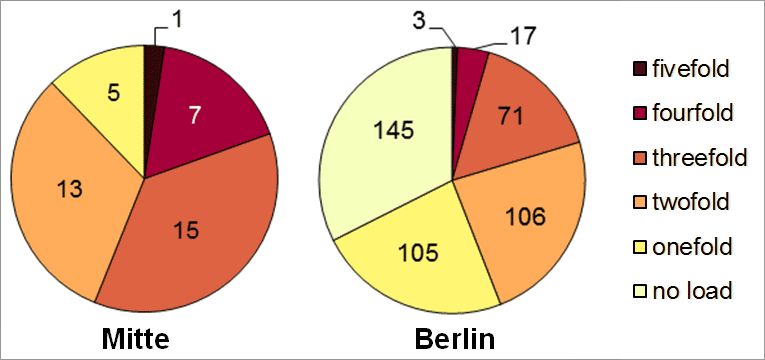
Fig. 10: Multiple load in the Mitte borough due to the core indicators noise, air pollution, availability of green spaces, thermal load as well as status index (social issues) according to planning areas
Image: Planergemeinschaft Kohlbrenner eG 2015c
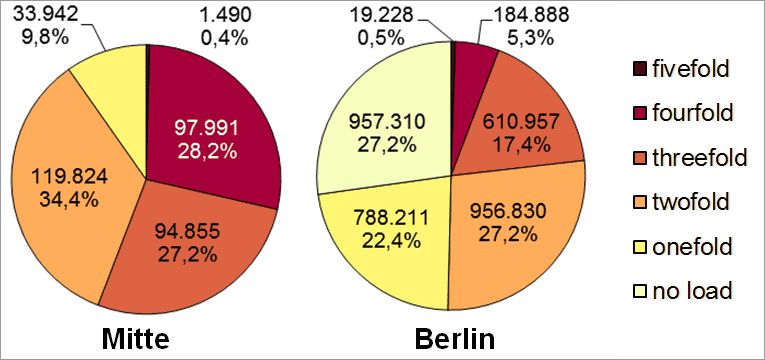
Fig. 11: Multiple load in the Mitte borough due to the core indicators noise, air pollution, availability of green spaces, thermal load as well as status index (social issues) according to inhabitants affected in all planning areas (deviations are due to rounding)
Image: Planergemeinschaft Kohlbrenner eG 2015c
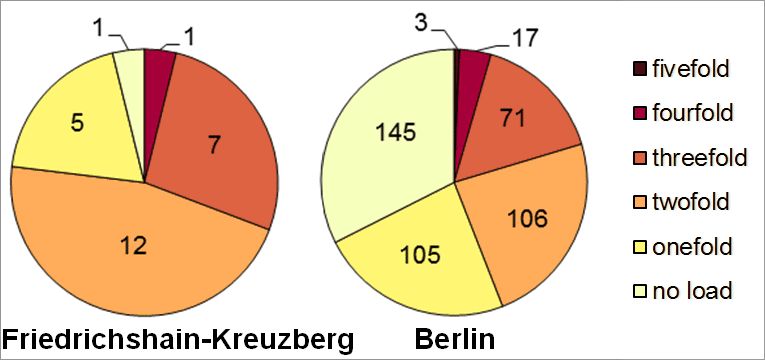
Fig. 12: Multiple load in the Friedrichshain-Kreuzberg borough due to the core indicators noise, air pollution, availability of green spaces, thermal load as well as status index (social issues) according to planning areas
Image: Planergemeinschaft Kohlbrenner eG 2015c
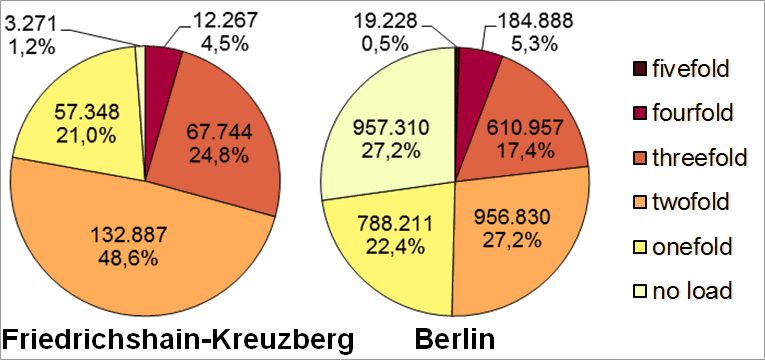
Fig. 13: Multiple load in the Friedrichshain-Kreuzberg borough due to the core indicators noise, air pollution, availability of green spaces, thermal load as well as status index (social issues) according to inhabitants affected in all planning areas (deviations are due to rounding)
Image: Planergemeinschaft Kohlbrenner eG 2015c
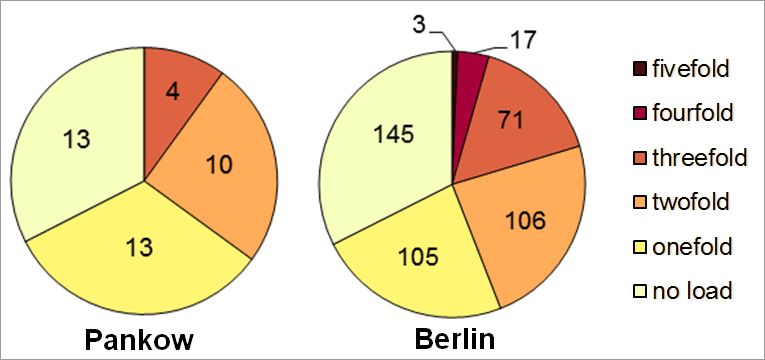
Fig. 14: Multiple load in the Pankow borough due to the core indicators noise, air pollution, availability of green spaces, thermal load as well as status index (social issues) according to planning areas
Image: Planergemeinschaft Kohlbrenner eG 2015c
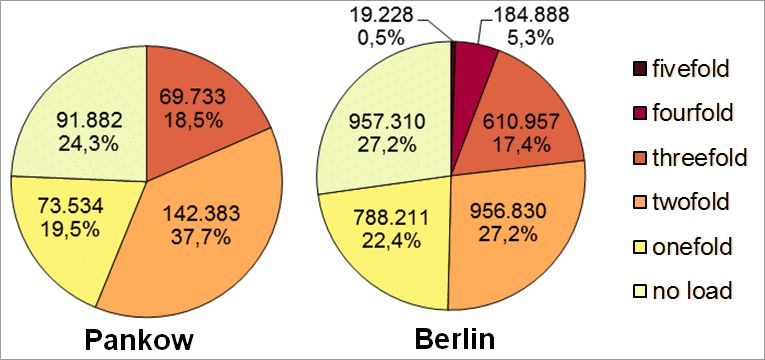
Fig. 15: Multiple load in the Pankow borough due to the core indicators noise, air pollution, availability of green spaces, thermal load as well as status index (social issues) according to inhabitants affected in all planning areas (deviations are due to rounding)
Image: Planergemeinschaft Kohlbrenner eG 2015c
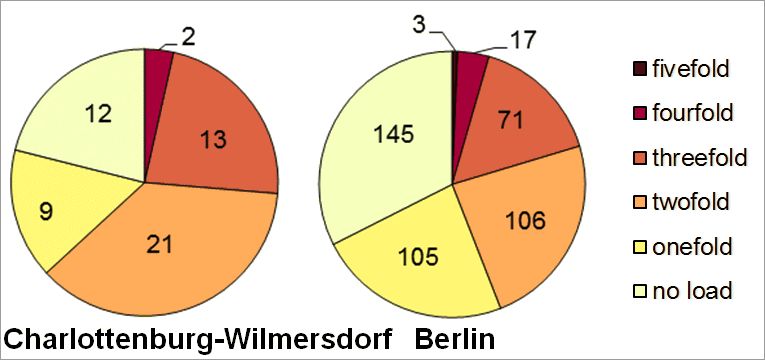
Fig. 16: Multiple load in the Charlottenburg-Wilmersdorf borough due to the core indicators noise, air pollution, availability of green spaces, thermal load as well as status index (social issues) according to planning areas
Image: Planergemeinschaft Kohlbrenner eG 2015c
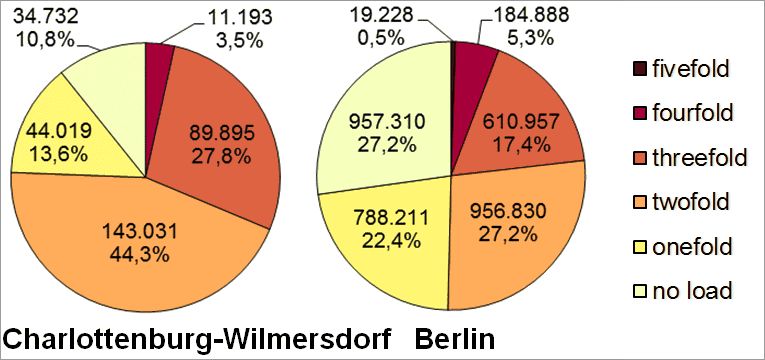
Fig. 17: Multiple load in the Charlottenburg-Wilmersdorf borough due to the core indicators noise, air pollution, availability of green spaces, thermal load as well as status index (social issues) according to inhabitants affected in all planning areas (deviations are due to rounding)
Image: Planergemeinschaft Kohlbrenner eG 2015c
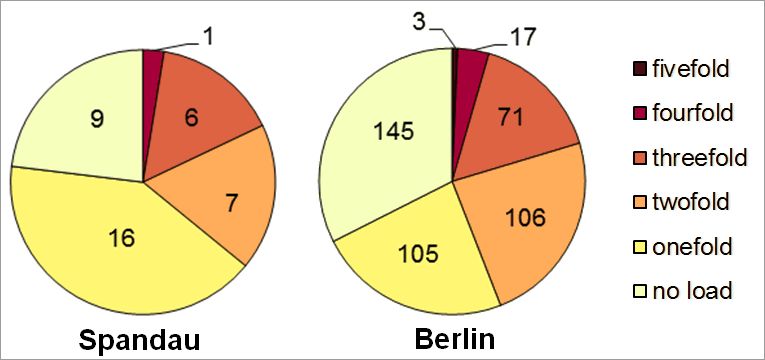
Fig. 18: Multiple load in the Spandau borough due to the core indicators noise, air pollution, availability of green spaces, thermal load as well as status index (social issues) according to planning areas
Image: Planergemeinschaft Kohlbrenner eG 2015c
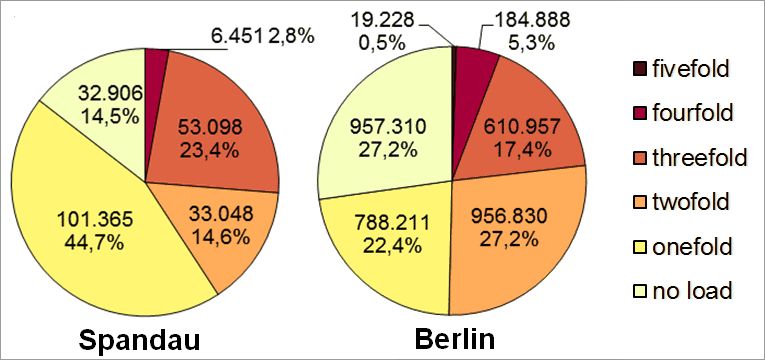
Fig. 19: Multiple load in the Spandau borough due to the core indicators noise, air pollution, availability of green spaces, thermal load as well as status index (social issues) according to inhabitants affected in all planning areas (deviations are due to rounding)
Image: Planergemeinschaft Kohlbrenner eG 2015c
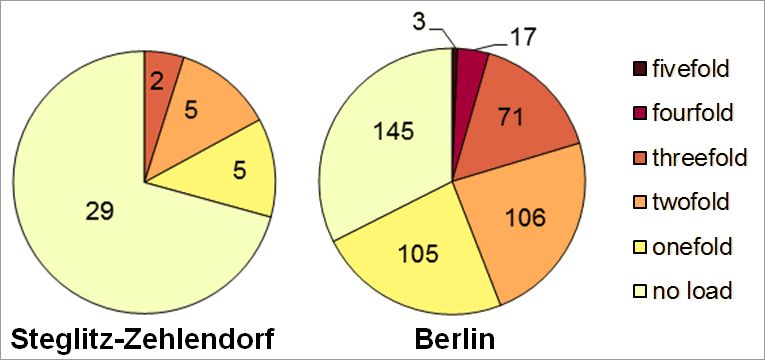
Fig. 20: Multiple load in the Steglitz-Zehlendorf borough due to the core indicators noise, air pollution, availability of green spaces, thermal load as well as status index (social issues) according to planning areas
Image: Planergemeinschaft Kohlbrenner eG 2015c

Fig. 21: Multiple load in the Steglitz-Zehlendorf borough due to the core indicators noise, air pollution, availability of green spaces, thermal load as well as status index (social issues) according to inhabitants affected in all planning areas (deviations are due to rounding)
Image: Planergemeinschaft Kohlbrenner eG 2015c
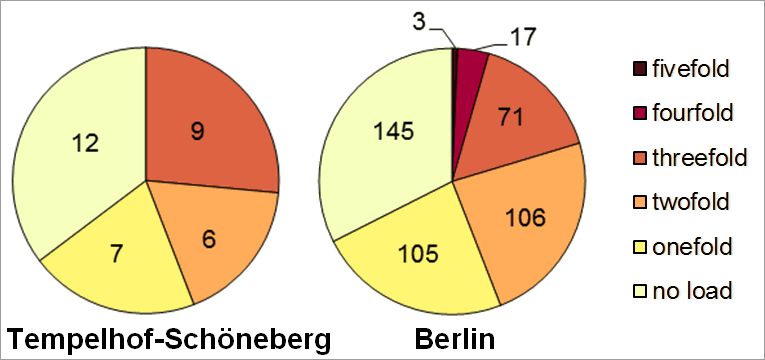
Fig. 22: Multiple load in the Tempelhof-Schöneberg borough due to the core indicators noise, air pollution, availability of green spaces, thermal load as well as status index (social issues) according to planning areas
Image: Planergemeinschaft Kohlbrenner eG 2015c
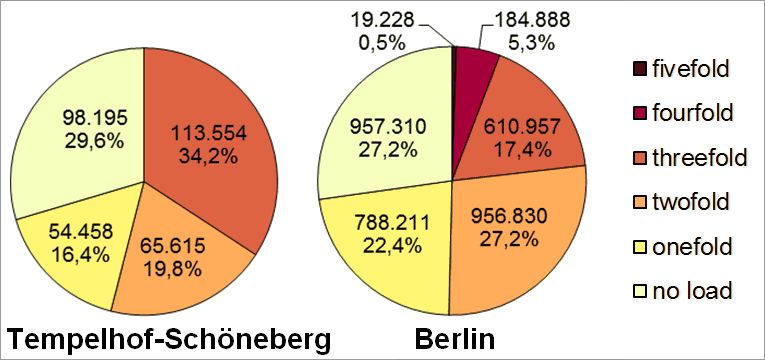
Fig. 23: Multiple load in the Tempelhof-Schöneberg borough due to the core indicators noise, air pollution, availability of green spaces, thermal load as well as status index (social issues) according to inhabitants affected in all planning areas (deviations are due to rounding)
Image: Planergemeinschaft Kohlbrenner eG 2015c
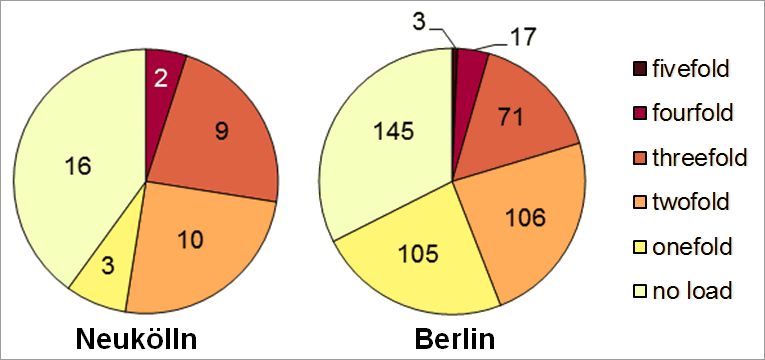
Fig. 24: Multiple load in the Neukölln borough due to the core indicators noise, air pollution, availability of green spaces, thermal load as well as status index (social issues) according to planning areas
Image: Planergemeinschaft Kohlbrenner eG 2015c
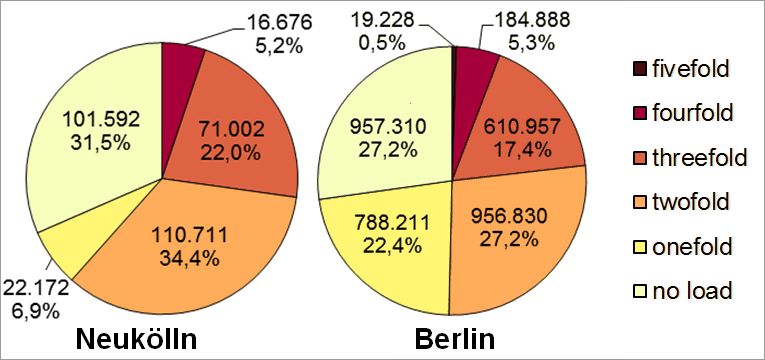
Fig. 25: Multiple load in the Neukölln borough due to the core indicators noise, air pollution, availability of green spaces, thermal load as well as status index (social issues) according to inhabitants affected in all planning areas (deviations are due to rounding)
Image: Planergemeinschaft Kohlbrenner eG 2015c

Fig. 26: Multiple load in the Treptow-Köpenick borough due to the core indicators noise, air pollution, availability of green spaces, thermal load as well as status index (social issues) according to planning areas
Image: Planergemeinschaft Kohlbrenner eG 2015c
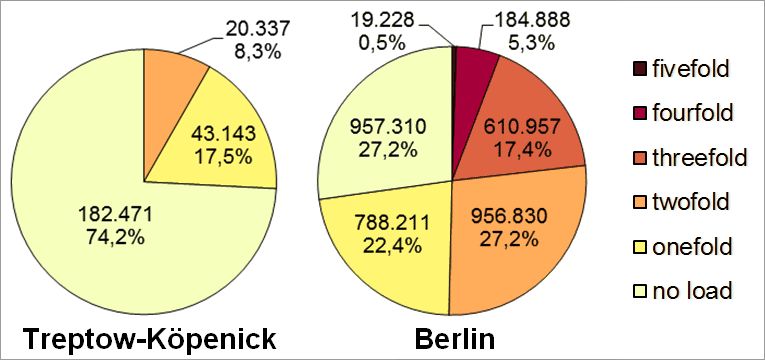
Fig. 27: Multiple load in the Treptow-Köpenick borough due to the core indicators noise, air pollution, availability of green spaces, thermal load as well as status index (social issues) according to inhabitants affected in all planning areas (deviations are due to rounding)
Image: Planergemeinschaft Kohlbrenner eG 2015c
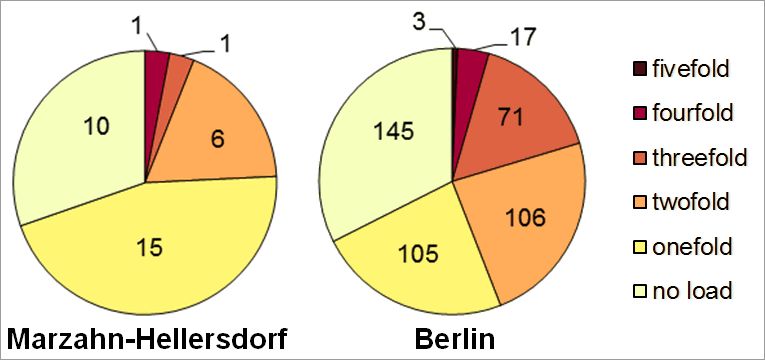
Fig. 28: Multiple load in the Marzahn-Hellersdorf borough due to the core indicators noise, air pollution, availability of green spaces, thermal load as well as status index (social issues) according to planning areas
Image: Planergemeinschaft Kohlbrenner eG 2015c
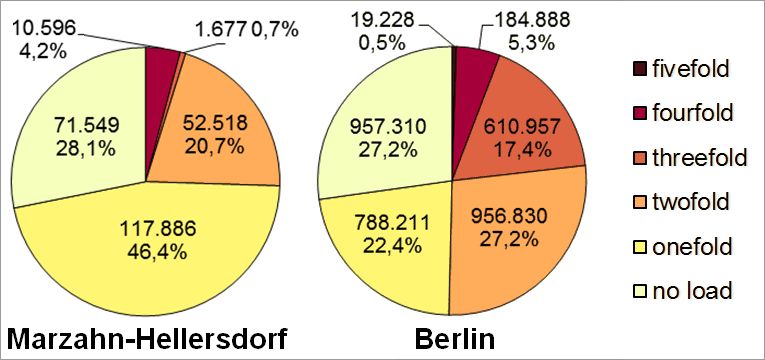
Fig. 29: Multiple load in the Marzahn-Hellersdorf borough due to the core indicators noise, air pollution, availability of green spaces, thermal load as well as status index (social issues) according to inhabitants affected in all planning areas (deviations are due to rounding)
Image: Planergemeinschaft Kohlbrenner eG 2015c
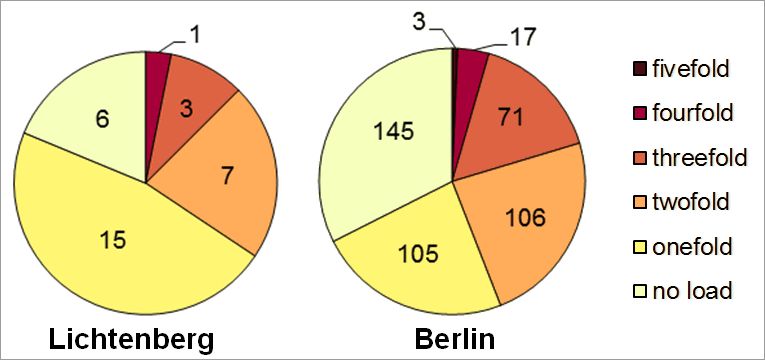
Fig. 30: Multiple load in the Lichtenberg borough due to the core indicators noise, air pollution, availability of green spaces, thermal load as well as status index (social issues) according to planning areas
Image: Planergemeinschaft Kohlbrenner eG 2015c
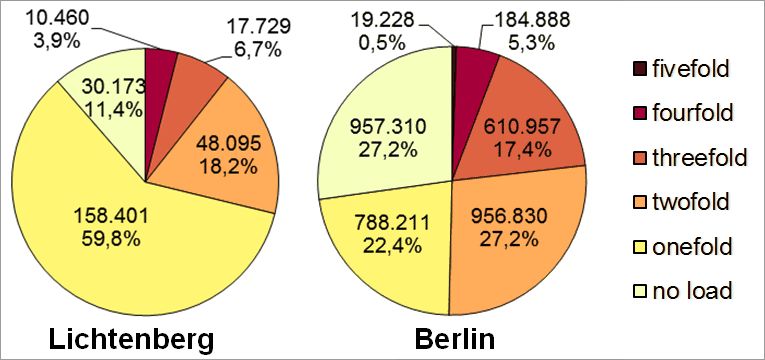
Fig 31: Multiple load in the Lichtenberg borough due to the core indicators noise, air pollution, availability of green spaces, thermal load as well as status index (social issues) according to inhabitants affected in all planning areas (deviations are due to rounding)
Image: Planergemeinschaft Kohlbrenner eG 2015c

Fig. 32: Multiple load in the Reinickendorf borough due to the core indicators noise, air pollution, availability of green spaces, thermal load as well as status index (social issues) according to planning areas
Image: Planergemeinschaft Kohlbrenner eG 2015c
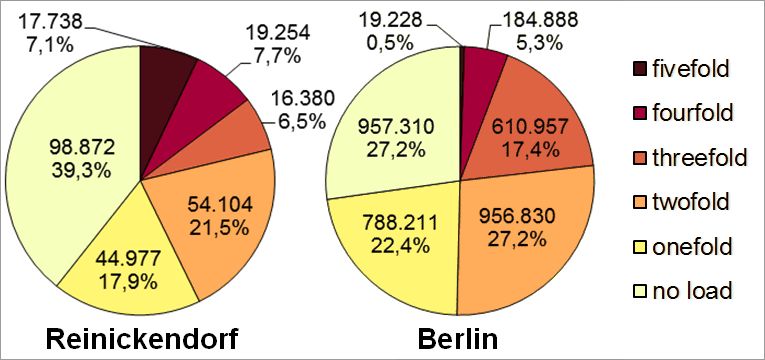
Fig. 33: Multiple load in the Reinickendorf borough due to the core indicators noise, air pollution, availability of green spaces, thermal load as well as status index (social issues) according to inhabitants affected in all planning areas (deviations are due to rounding)
Image: Planergemeinschaft Kohlbrenner eG 2015c
